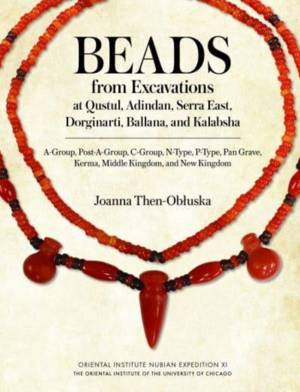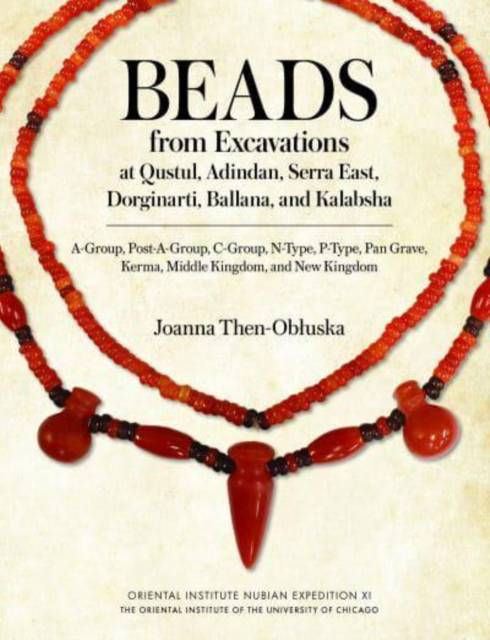
- Retrait gratuit dans votre magasin Club
- 7.000.000 titres dans notre catalogue
- Payer en toute sécurité
- Toujours un magasin près de chez vous
- Retrait gratuit dans votre magasin Club
- 7.000.000 titres dans notre catalogue
- Payer en toute sécurité
- Toujours un magasin près de chez vous
Beads from Excavations at Qustul, Adindan, Serra East, Dorginarti, Ballana, and Kalabsha
A-Group, Post-A-Group, C-Group, N-Type, P-Type, Pan Grave, Kerma, Middle Kingdom, and New Kingdom
Joanna Then-Obluska
174,95 €
+ 349 points
Description
This book presents a comprehensive corpus of beads and pendants found during excavations undertaken by the Oriental Institute of the University of Chicago between 1960 and 1968 at the Lower Nubian sites of Qustul, Adindan, Serra East, Dorginarti, Ballana, and Kalabsha and stored in the Oriental Institute Museum. This vast, illustrated catalog organizes the finds first chronologically according to the main periods of Nubian history and then by cultural units, beginning with the A-Group and ending with modern times. The present volume-the first of two-comprises beads from Early Nubian (A-Group, Post-A-Group), Middle Nubian (C-Group, Pan Grave, Kerma, Middle Kingdom), and New Kingdom sites. The discussion of each cultural unit begins with background information and develops into a fascinating story of the most characteristic types that form part of that group's identity, though types and materials often cross chronological and regional borders. The story is also one of jewelry fashions and the wealth and long-distance contacts of Lower Nubia, which lay at the crossroads of ancient routes in this part of the world. More specialized information on bead types, ordered by the materials from which the beads were made, is given in the second section of each cultural category. An outline of the preserved beadwork and an anthropological analysis of the remains of the beads' owners, together with references to parallels known from relevant literature and museum research, are also provided. The volume concludes with illustrated synoptic and concordance tables that allow the reader to switch easily between catalog, Oriental Institute Museum, and Oriental Institute Nubian Expedition find numbers.
Spécifications
Parties prenantes
- Auteur(s) :
- Editeur:
Contenu
- Nombre de pages :
- 361
- Langue:
- Anglais
- Collection :
Caractéristiques
- EAN:
- 9781614910770
- Date de parution :
- 20-10-22
- Format:
- Livre relié
- Format numérique:
- Genaaid
- Dimensions :
- 153 mm x 229 mm
- Poids :
- 3987 g







